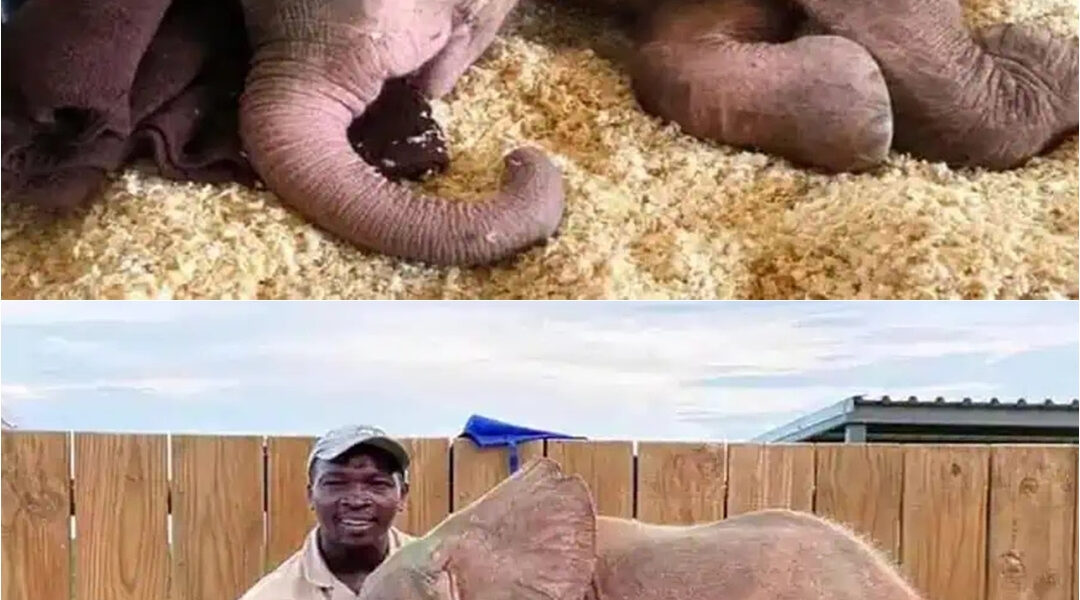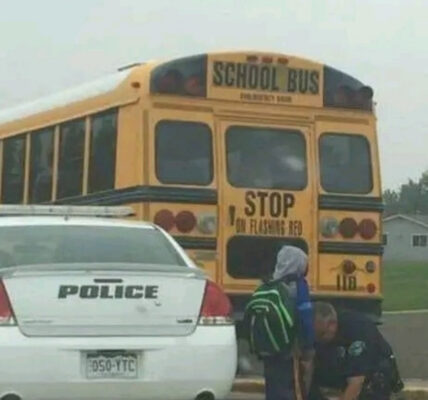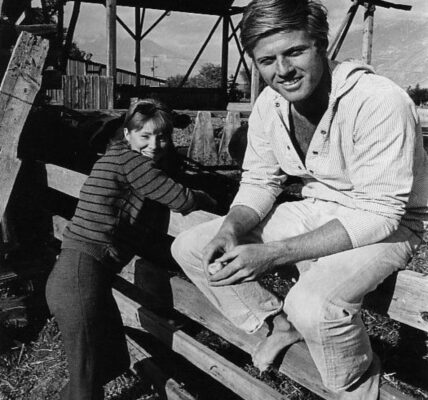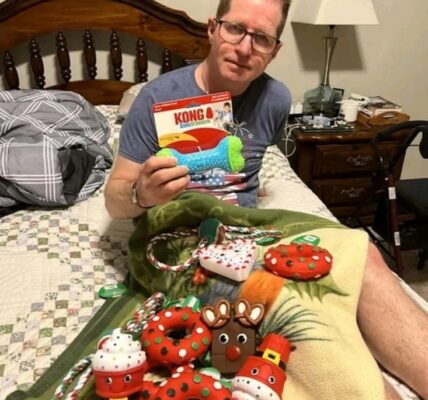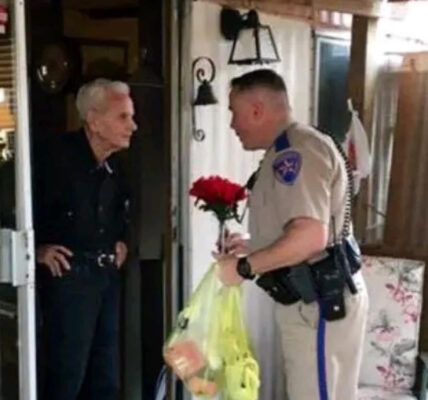On January 8, 2020, a miracle arrived at the gates of the Hoedspruit Elephant Rehabilitation and Development (HERD) sanctuary in South Africa. She was just four months old, an albino calf named Khanyisa, and her tiny body bore the marks of cruelty no creature should endure.

A poacher’s snare had wrapped tightly around her head, slicing through her ear, cheeks, and neck. The sharp wire dug deeper with every movement, leaving wounds so severe her eyes had swollen shut. Somehow, against all odds, she had torn the trap from the ground and staggered through the wild—bleeding, alone, dehydrated, and in unbearable pain.
The HERD team wasn’t sure if she would live through her first night.
A Fragile Beginning

Her head was grotesquely swollen, her tiny body trembling from trauma and exhaustion. Caregivers worked tirelessly, cleaning and dressing her wounds, offering the bottle of milk she struggled to drink from. For weeks, it was touch and go.
Dr. Peter Rogers, a wildlife veterinarian, stitched her torn cheeks and later operated on her ear. Twice a day, her wounds were cleaned. Her caregivers spoke gently to her, stroked her fragile skin, and never gave up hope.
Slowly, Khanyisa began to respond. She opened her pale blue eyes, blinked against the light, and reached out with her trunk for the bottles of milk that gave her strength.
The Road to Recovery

By the end of her first month, Khanyisa’s healing was visible not just in her wounds, but in her spirit. She began to gain weight, going from 124 kilograms to 159 in just weeks. She grew stronger, her steps more confident, her appetite more eager.
Still, she was never alone. Beside her was Lammie, a gentle sheep who became her companion and guardian. Where Khanyisa went, Lammie followed, offering comfort in moments of loneliness. Their unlikely friendship was a balm to both—a reminder that healing comes not only through medicine, but through love.
A Family Waiting

Once her physical recovery was complete, the next challenge began: introducing her to her new family.
At HERD lived the Jabulani herd, elephants rescued from poaching and abandonment, many of them orphans themselves. Carefully, day by day, Khanyisa was brought into their enclosure to meet them.
Jabulani, one of the older elephants, was the first to extend his trunk in greeting. But it was Lundi, a wise and nurturing matriarch, who stepped forward to claim Khanyisa as her own. The little calf, once alone and broken, was no longer motherless. She had been chosen, accepted, and embraced by her new family.
More Than Survival
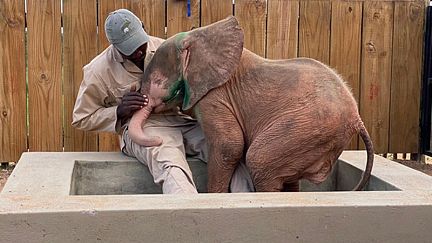
By March, thanks to stem cell treatments and relentless care, Khanyisa’s wounds had fully healed. But what truly astonished everyone was her spirit. She wasn’t just surviving—she was thriving.
She played, splashed in water, explored with curiosity, and leaned into the protective circle of her new herd. Each step she took was a victory, not just for her, but for every person who had poured love, labor, and hope into her recovery.
A Symbol of Hope
Khanyisa’s journey touched hearts around the world. Photos and videos of her transformation spread online, showing the resilience of an animal who refused to let cruelty define her future.
HERD shared her story, not only to celebrate her survival but to raise awareness. Elephants remain deeply vulnerable—threatened by poaching, habitat loss, and conflict with humans. Khanyisa’s survival is a reminder of what is at stake, and what is possible when compassion triumphs over destruction.
Her Legacy
Today, Khanyisa continues to grow, her white coat glowing under the African sun as she roams with her herd. She is living proof that healing is possible, that family can be found again, and that even the deepest wounds can close with time, care, and love.
HERD summed up her journey best:
“At the time when we needed it the most, she gave us passion, hope, and joy. Despite her horrible beginnings, Khanyisa showed us the power of resilience. She has overcome all barriers with extraordinary positivity and fight, and in doing so, she inspired us to do the same.”
Khanyisa’s story is more than one elephant’s survival. It is a call to protect, to preserve, and to honor the beauty of life before it’s too late.
